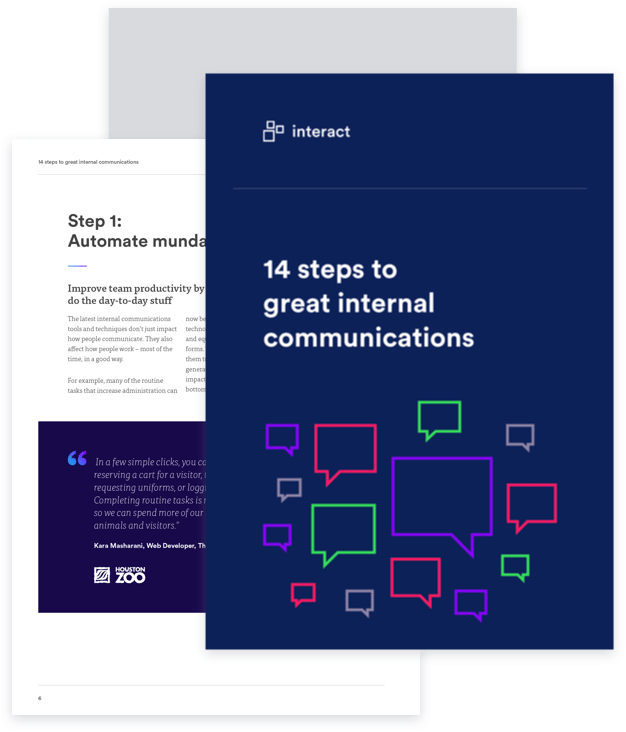After the initial surge in response to the coronavirus pandemic outbreak, staff worldwide hit a plateau. But as we move into a new term and see more staff returning to the office, it’s time to reignite purpose.
When countries around the world began to roll out lockdown measures, very few could fully appreciate the scale – and length – of the crisis we faced.
With normal business patterns and protocols completely disrupted, many of us naturally responded using our ‘surge capacity’ to weather the emergency phase.
Surge capacity is a collection of adaptive systems – mental and physical – that humans draw on for short-term survival in acutely stressful situations, such as natural disasters.
Ann Masten, psychologist
We may have been operating on adrenaline, seeing a temporary boost in our motivation or productivity, or perhaps a growth in empathy or creativity. Lockdown projects took off; community initiatives were devised; parents juggled work and homeschooling; organizations innovatively and creatively adapted to keep their doors open.
But unlike natural disasters – which are typically short in terms of their emergency phase, even if recovery takes a while – a pandemic is different. With an ‘end date’ a far-off reality, we’ve existed in a state of indefinite uncertainty. And that surge capacity depleted. We ran out of motivation and drive: we plateaued.
The good news is that as some aspects of life make a cautious return, we have an opportunity to look forward and pick up the reins again.
Schools, colleges, and universities are opening once more; workers are being nudged back towards office working. As leaders and communicators, it’s time to embrace this ‘new term’ for our organizations: and help staff find renewed purpose in their work.
The value of purpose
The benefits of operating a purpose-driven organization are significant.
Research has proven those companies make more money, have more engaged employees and loyal customers, and are even better at innovation and transformational change. They grow faster, adapt quicker, attract better talent.

But it’s not only companies who need purpose.
[Employees] are now driven more than ever by company mission and purpose and require a workplace culture that delivers it.
State of the Global Workforce Report, Gallup
Employees are increasingly driven by purpose: the idea of being a ‘part of something bigger’ or motivated by the intrinsic value above and beyond their paycheck.
With this sense of direction, employees are more productive, demonstrate greater pride in their organization and work, and serve as authentic brand ambassadors. They’re also more likely to be retained by the organization.
In fact, a LinkedIn survey found 49% of employees would trade a portion of their salary to continue in their current role with an added sense of purpose.
After months of lockdown, many employees report feeling fatigued, directionless, and lacking motivation. Rallying them behind a sense of purpose in their work may be the crucial push needed to get everyone back on track: and ride on the ‘new term’ mentality to drive up engagement.
So, how do we give our employees a renewed sense of purpose and direction?
#1. (Re)define and share your mission
Your mission statement should set out your purpose for existing as an organization. However, for many organizations, this can be a box-ticking exercise that doesn’t truly reflect what they are or what they’re setting out to do.

Take time to (re)evaluate your existing mission (or undertake a project to define one, if you don’t already have one in place.) It’s vital to go beyond the fundamentals of business objectives such as revenue, growth, or market share: and instead, consider broader impact.
Why do you do what you do? How does it benefit, change, or contribute to society? Does your mission inspire, motivate, give a sense of contributing to something bigger?
Consider the difference between, “Our mission is to create the world’s leading video call app,” and “Our mission is to connect people around the world and bring them closer together, no matter where they are.”
In the wake of COVID-19, we have a unique opportunity to align our efforts with broader social impact and value. Throughout the pandemic, organizations and individuals have demonstrated increased awareness of how their contributions and objectives can make a difference.
If your staff feel they’re contributing to a greater good – not just driving profits – they’ll have added purpose when they turn up every Monday morning.
#2. Connect the dots
One of the biggest challenges in instilling purpose is connecting what individual employees do to the end result or bigger picture.
This is especially challenging when it comes to your frontline, production line, or non-HQ-based employees. The shop floor worker on the cash register may (understandably) have difficulty appreciating how their day-to-day responsibilities can possibly have an impact on your overall mission.
So, connect the dots. Map out all those individual contributions and the role they play in getting your product or service in front of the customer, and the impact that has.

One of the most in-depth (but eye-opening) examples of this was the effort of author A.J. Jacobs, who set out to personally thank every person who helped make his morning cup of coffee. From the barista to those who grew and harvested the coffee beans and more, he ended up thanking over 1,000 individuals – who would never otherwise have sight of those enjoying the fruits of their labors.
An end-to-end ‘exposé’ of how the work and efforts of individuals feed into the big picture will help every employee understand the role they have to play: and give them an enhanced sense of purpose.
#3. Share the stories
We talk about the value of storytelling a LOT: but for a good reason.
Stories are remembered up to 22 times more than facts alone and are proven to achieve higher impact, engagement, and emotional connection.
Organizations are increasingly using stories from customers and consumers for marketing purposes, showing the real-life impact of the product or services they provide for brand and reputational endorsement. It’s time to bring those same stories internally.

Use your internal communications platforms to really bring the work you do to life. Interview your customers, facilitate a ‘day in the life of’ series that follows customers on the ground, share stories of their work, and how your organization helps. Do employees visit customer sites or offices and can feed back? Could you do a ‘humans of New York’-style interview of those visiting your stores? What about the testimonials consumers leave on your external platforms?
Putting these front-and-center in your organization gives context to the work of your employees, helping them to understand the real-life impact of what they do day-to-day.
#4. Get staff to focus on what comes next
In crisis mode, we’ve focused on survival: dealing with what’s immediately in front of us.
The coronavirus pandemic shortened the view for the majority of employees, who have naturally focused on the basics such as retaining their jobs, adjusting to new protocols or ways of operating, or the day-to-day balancing act of parenting and working from home simultaneously.
But now we have a new term, new focus. It’s time to get staff thinking about what comes next and expanding beyond crisis management to the longer-term.

This can come in different forms. For example, leadership communications about future direction, objectives, or goals for the coming twelve months can not only provide reassurance but also instill renewed purpose. Or consider a short-term initiative or campaign, something staff call rally behind and focus on.
It’s also a chance to encourage staff to think about their long-term goals and place within your organization. When your employees feel their organization’s sole interest lies in how they can improve the bottom-line, they quickly lose motivation.
L&D may not be top of the priority list when budgets are tight. However, providing these opportunities is proven to deliver a return: staff who feel invested in will go above and beyond for their employer, show higher levels of engagement, and will be more productive.
Inspire employees with formal or informal coaching, training, and learning opportunities to reignite their sense of purpose beyond turning up and clocking in.
#5. Go beyond the job.
Much as we may try, there are some roles – or some employees – who will struggle to find meaningful purpose in the roles that they perform.
If the what or why doesn’t inspire, it’s time to focus on the how.

For some organizations, their commitment to corporate social responsibility or the ethics, morals, and values of the culture can be a powerful and compelling differentiator that may also inspire employees.
Whether it’s your commitment to become carbon neutral, your support of particular causes, or the strong ethical ethos that shapes your supply chain, consider those parts of how your organization operates that have specific meaning or significance.
Encourage staff to be active participants: whether through internal charity events, offering them community days, or listening to their ideas to contribute or shape those elements.
Those organizations that have played a role in the pandemic recovery efforts or went above and beyond to support their communities, employees, or industry during challenging times have a unique opportunity to align employees behind this.
When staff understand they can have a social impact – whether through their roles or as part of an organization that contributes to something bigger – they’ll find renewed purpose.
Purpose must be communicated
Perhaps most fundamental to each of these ways of inspiring purpose in employees is the act of communication.
We must communicate our mission, tell employees where they fit in the bigger picture, and share stories that will inspire them. We need to shout about what makes us different and align them behind our business goals.
Internal communication is central to our organizational and wider economic recovery. If we can foster cultures that will connect our employees to something above and beyond the fundamentals of their day-to-day roles, we can transform their engagement with our organizations.
With that added focus, we’ll tap into an amazing power: and drive long-term business success.


